by Wallace Wyss –
Now cars are supposed to have windscreens, right? So the Pininfarina Sergio Concept, a rare Ferrari introduced back in 2013, got away with running without a windscreen, they had the advantage of making a car look very dramatic compared to a street car.
Though I’m a few years late commenting on the design, I think, in the age of The Electric Car Takeover, it’s worth remembering some significant designs in internal combustion cars. The show car was presented by Pininfarina at the Geneva Show.
Fabio Filippini, vice president design, Pininfarina, at the time, speaking of Sergio Pininfarina, the late head of the coachbuilder, who died on 3 July 2012, commented: “Sergio’s values of elegance, purity and innovation are in our DNA. They are an important part of who we are and what make the Pininfarina touch so unique. This concept car is both an expression of our history and our vision for the future. It embodies the very principles Sergio embraced throughout his career. We wanted to take Sergio’s original thinking of over 30 years ago and create a modern version of his ideas with a very exclusive and exciting design.”
We are used to thinking Italian cars are designed on sketchpads, the old fashioned way but even in 2013, because of the tight time schedule, Pininfarina used a combination of digital tools and packages provided by their partner Dassault Systèmes, through the 3DEXPERIENCE platform.
For the early concept phase designers used CATIA for Creative Designers, a solution that mixes polygonal/SDS modeling with traditional CAD surfacing tools (ICEM Surf) to quickly create, assess and modify different designs.
Marco Capolicchio, the man responsible for surface modeling, explained in a press release: “We adopted a multi-phased approach in which we first created preliminary shapes with CATIA Imagine & Shape and then visualized each one with the Live Rendering application. The ability to experience each design variation in 3D in a realistic virtual environment was very much appreciated and helped us to rapidly converge on the perfect design for the Sergio Car. With Imagine & Shape, we transformed the car’s shape into a precise 3D geometric model using subdivision surfaces and created a mesh that our designers were able to easily deform and reshape at will. In the second phase, we enhanced the technical content of the model by generating precise Class A surfaces, complete with manufacturing specifications, using the 3DEXPERIENCE surface modeling application ICEM.”
This progressive looking car started with using an existing car as the base, a Ferrari 458 Spider. It ran through tests in the Grugliasco wind tunnel to optimize aerodynamic performance which led to an all new body of full carbon, saving about 10% in weight compared to the original aluminum bodywork.
Taller 21” light alloy one-stud wheels were included, with a hub derived from the 458 Challenge; new LED taillights, new headlamps smaller doors, window-less and opening upward clamshell like at 45 degrees; a new dash top; modified seats with new fixed head restraints, were added. The roof, windscreen and rear bench seat were removed.
In theory the idea was that the airflow increased pressure as the car speeded up, so you could drive it with no windscreen. Pininfarina built and tested an airfoil placed in a recess on the front bonnet, which produces a double deflection of the air flow entering the passenger compartment. The first deviation is from the wing itself, the second from the air that accelerates in the channel created between the airfoil and the corresponding shape of the recess in the trunk. So basically the car has to have work done in front and in back to run a “virtual windscreen,” the air passing above the heads of the driver and the passenger. They also say the results of their work contributed to increase the downforce on the car’s front axle. Buried in the press releases is the information that the virtual windscreen is effective at speeds as low as 50 kph. There’s where I deplane; that’s what 20 mph? I plan to go faster than that in a Ferrari.
When you see pictures of it being driven the driver and passenger are in full wrap around helmets. In front of the door panel, two helmets are housed in a storage locker made in collaboration with Newmax and personalized with the color of the exterior. Also key was a wing inserted in the front bumper. The shape and dimensions of the wing were calculated so as to give the required load at the various speeds and, at the same time, allow correct flow of air to the radiators of the cooling system up front.
A roll-bar with a fixed spoiler increased the downforce on the rear axle. Even so small a detail as the central rear-view mirror was aerodynamically optimized to link up with the air flow of the virtual windscreen. The engine’s air intakes were styled into the two sides. The air vents at the base of the roll-bar were for the oil coolers.
Overall, the new design had more torsional stiffness exceeding that of the original spider, thanks to smaller doors, and a weight reduction of about 150 kg compared to the spider. That got the acceleration to below 3.4 seconds for 0-100 kph.
It might be stretching it a bit to call it a “production car” as just six were built, starting in 2015, each with a different color and interior configuration. And guess what? The production version had a windshield. Welcome to the real world!
Other changes for production included a removable hard top, headrests no longer incorporated in the roll bar and the sharing of many components with its donor car including the interior, tail lights, indicators and the side view mirrors.
They sold for $3,000,000 each and I think are worth more today. I have to give them credit for trying it and for honoring Sergio with a memorable design.
Let us know what you think in the Comments.
THE AUTHOR: Wallace Wyss, a fine artist specializing in exotic motorcars, has fulfilled the role of guest lecturer at the Art Center College of Design.
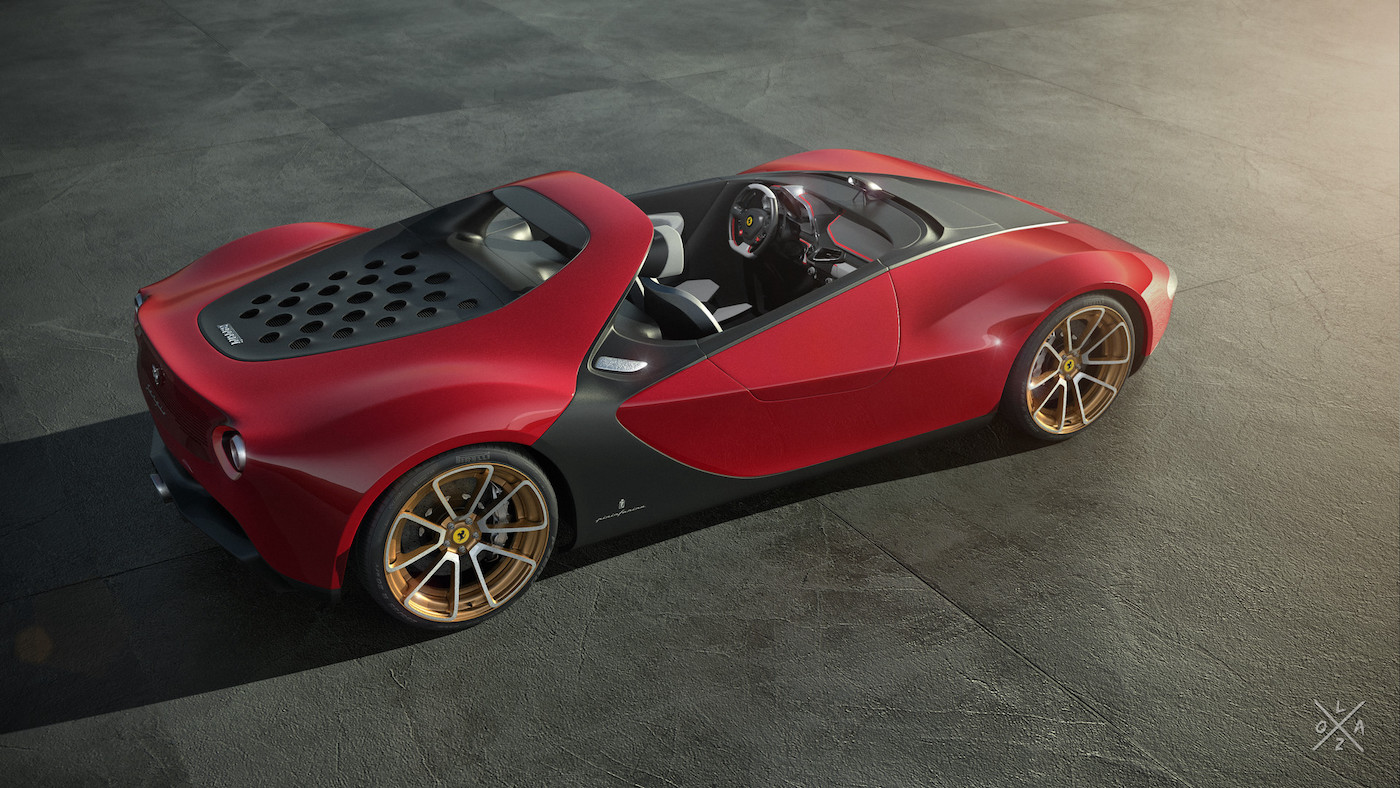
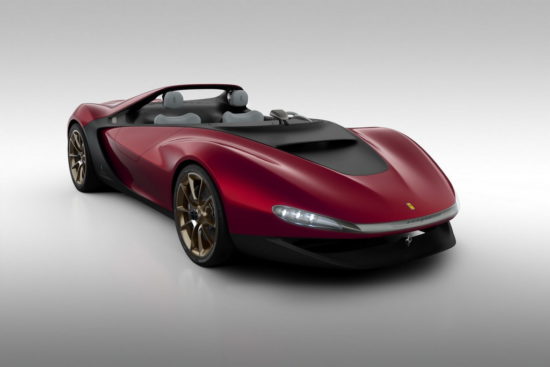
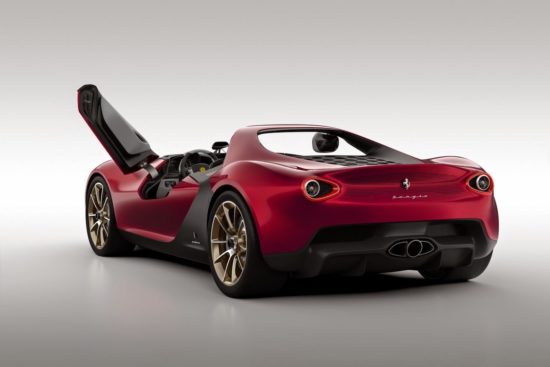
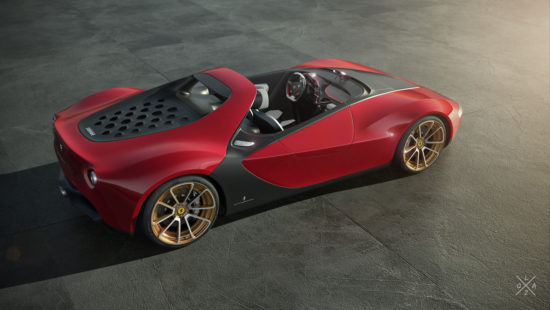
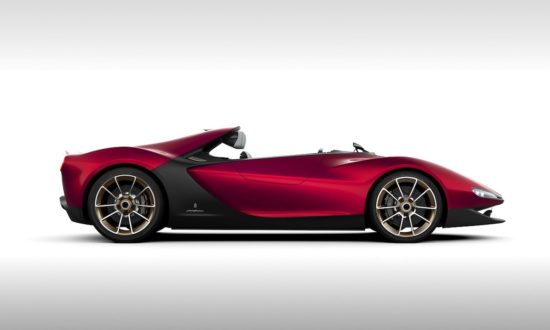
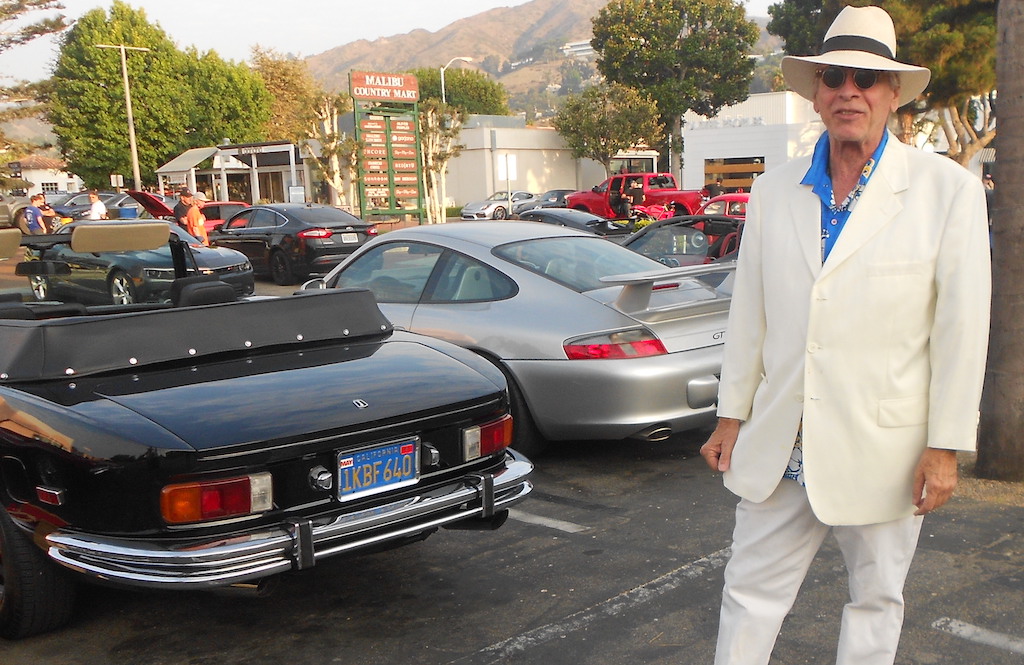

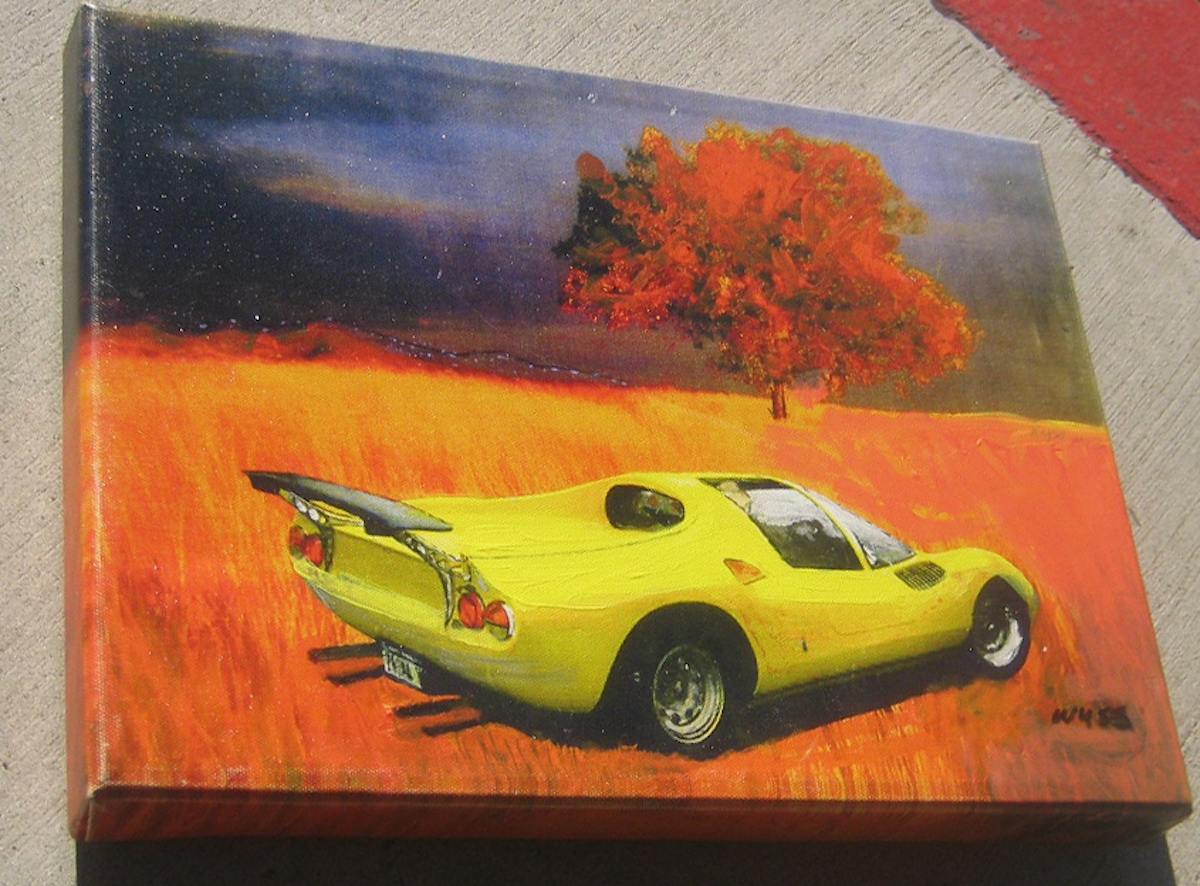

“Buried in the press releases is the information that the virtual windscreen is effective at speeds as low as 50 kph. There’s where I deplane; that’s what 20 mph? I plan to go faster than that in a Ferrari.”
I read that say that below 50 kph the windscreen is ineffective, hence above 50 kph it is effective and you can go as fast as you dare.
What is so refreshing is that the Italian designers embrace the Art of Design. Unrestricted by government laws, insurance mandates and, most importantly, bean counters, they feast on the thrill of what driving a motorcar IS.
The result is nothing less that visual excitement and physical thrills
Wes you are right, I read it backwards, but ask any motorcyclist about bugs in the face, there are nasty surprises with no screen. I’ll ask Mike to change it
The early T series MG’s had the right idea with fold down front screens or the Healey 100 with its sexy one with pegs in the racing position .
This is a great fantasy that very few men will actually live. If you factor out the bad weather days as well as the fact that your wife/ girlfriend won’t care for wearing goggles with her hair constantly blowing in the wind, we have formed the basis for a rarely used very expensive car that most people know is difficult to use in the real world.
Oh Robert,
Don’t spoil our fun and fantasy.